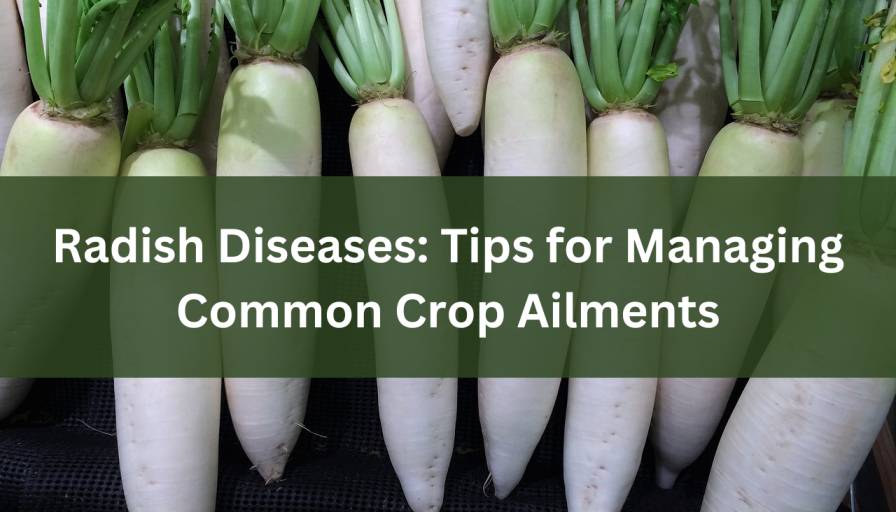
In the world of farming, there's a simple truth: when a crop is easily available in the market, people tend to overlook its value. To counter this, MC Dominic, Founder & Editor-in-Chief of Krishi Jagran, conceived an innovative idea to shed the spotlight on these overlooked crops and bring out the extraordinary within the ordinary. The initiative aims to give ordinary crops the recognition they deserve by highlighting their benefits and other important aspects, empowering consumers to make informed food choices.
As April arrives, we turn our attention to radishes, as this month is the best time to sow these vibrant veggies. Within this article, we explore the common diseases affecting radishes, offering practical solutions recommended by the National Horticulture Board (NHB).
1. Alternaria Blight (Alternaria Raphani):
The pathogen affects leaves, stems, pods and seeds. Symptoms of the disease first appear on the leaves of the seed stem in the form of small, yellowish, slightly raised lesions. Lesions appear later on the stems and seed pods. The infection spreads rapidly during rainy weather, and the entire pod may be so infected that the styler end becomes black and shrivelled. The fungus penetrates in pod tissues, ultimately infecting the seeds. The infected seed fails to germinate.
Control:
Though hot water treatment of the seed kills the fungus, the use of disease-free seeds is recommended. Regular spraying with Difolatan (0.3%) or Dithane M 45 (0.2%) or Ridomil (0.1%) controls the disease effectively.
2. White Rust (Albugo candida):
The disease attacks the leaves and flowering shoots. Affected flowering shoots get deformed and bear only malformed flowers. A white powdery substance in patches is observed on the undersurface of the leaves.
Control:
Clean cultivation and the use of resistant varieties help to prevent the disease. Regular spraying with Dithane Z 78 (0.2%) effectively controls the disease.
3. Root Rot of Radish (Erwinia Rhapontici):
It is a bacterial disease, which spreads through implements and irrigation water. Symptoms appear as rotting of pith tissues resulting in cavity formation and wilting of plants. The disease spreads when the roots are transplanted for seed production.
Control:
Dipping the seeds in a solution of Agrimycin-100 (100 ppm) at the time of sowing is effective in checking the disease.
4. Radish Mosaic Virus (RMV):
The symptoms first appear as small, circular to irregular, chlorotic Lesion in between and adjacent to the veins. Little or no leaf distortion is noticed and stunting or abnormal formation rarely occurs. It is transmitted through aphids.
Control:
The disease can be effectively checked by controlling aphids with 2-3 foliar sprays of either Dimecron (0.05%) or Monocrotophos (0.05%) at 10-day intervals.
5. Radish Phyllody:
The disease is transmitted by jassid Orosius Albicinctus. The diseased plant assumes a dull grey to light violet colouration. The symptoms of the disease appear at the time of flowering when all the floral parts become green violet and leafy. The sepals and petals become green thick knob-headed leaves. Generally, the whole plants show symptoms of the disease. If the infection occurs at an early stage of growth in the nursery then the whole plant is affected.
Control:
One or two sprays of Monocrotophos (0.05%) or Phosphamidon (0.05%) or Oxydemetan Methyl (0.02%) is done to eradicate the jassids - the vector of the virus. Soil application of Thimet 10-G (1.5 kg a.i./ha) is also recommended. The application of Thimet should be followed by irrigation.
















